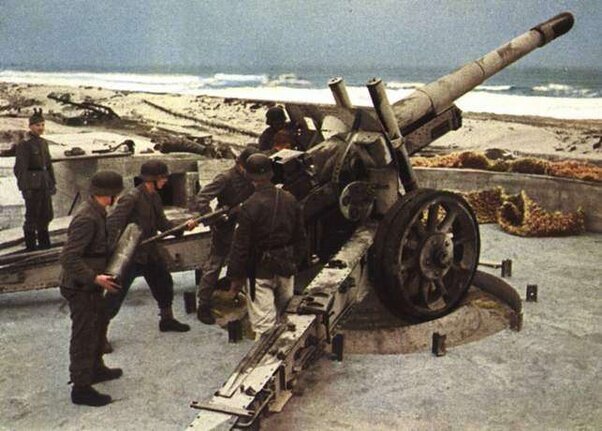German Named Blitzkrieg Era 1940 Trench Art German 77mm Artillery Shell







German Named Blitzkrieg Era 1940 Trench Art German 77mm Artillery Shell
Measures: Around 12 inches
Inscriptions: ‘Trever Erkeller 1940’
This original 77 mm artillery shell is hand stamped and embossed by German soldier named ‘Trever Erkeller’. During the time that this shell was estimated to be fired the Germans were performing a blitzkrieg style of warfare and expanding their reach across Europe. Soldier’s in downtime would create trench art such as this with leftover materials of war, this being from the leftover artillery shell casing.
Blitzkrieg History during WWI:
In the first phase of World War II in Europe, Germany sought to avoid a long war. Germany's strategy was to defeat its opponents in a series of short campaigns. Germany quickly overran much of Europe and was victorious for more than two years by relying on a new military tactic called the "Blitzkrieg" (lightning war). Blitzkrieg tactics required the concentration of offensive weapons (such as tanks, planes, and artillery) along a narrow front. These forces would drive a breach in enemy defenses, permitting armored tank divisions to penetrate rapidly and roam freely behind enemy lines, causing shock and disorganization among the enemy defenses. German air power prevented the enemy from adequately resupplying or redeploying forces and thereby from sending reinforcements to seal breaches in the front. German forces could in turn encircle opposing troops and force surrender.
Germany successfully used the Blitzkrieg tactic against…
Poland (attacked in September 1939)
Denmark (April 1940)
Norway (April 1940)
Belgium (May 1940)
the Netherlands (May 1940)
Luxembourg (May 1940)
France (May 1940)
Yugoslavia (April 1941)
Greece (April 1941)
A German term for “lightning war,” blitzkrieg is a military tactic designed to create disorganization among enemy forces through the use of mobile forces and locally concentrated firepower. Its successful execution results in short military campaigns, which preserves human lives and limits the expenditure of artillery. German forces tried out the blitzkrieg in Poland in 1939 before successfully employing the tactic with invasions of Belgium, the Netherlands and France in 1940. The blitzkrieg was also used by German commander Erwin Rommel during the North African campaign of World War II, and adopted by U.S. General George Patton for his army’s European operations.
Conventional wisdom traces blitzkrieg, “lightning war,” to the development in Germany between 1918 and 1939 of a body of doctrine using mobility to prevent repetition of the attritional deadlock of WWII Soldiers such as Hans von Seeckt and Heinz Guderian allegedly perceived more clearly than their counterparts elsewhere in Europe the military potential of the internal-combustion engine combined with modern communications technology. Large formations moving on tracks and wheels, directed by radios, could rupture an enemy’s front and so disorganize its rear that countermeasures would be paralyzed. First tested in Poland, the concept reached perihelion in France and the Low Countries in 1940, when in less than six weeks the German army crushed the combined forces of four nations. Applied a year later against the SU, blitzkrieg purportedly brought the Wehrmacht to the gates of Moscow in six months. Some accounts insist that only Adolf Hitler’s incompetent interference tipped the war’s balance so far against Germany that even blitzkrieg’s most sophisticated refinements could do no more than stave off the Reich’s collapse.